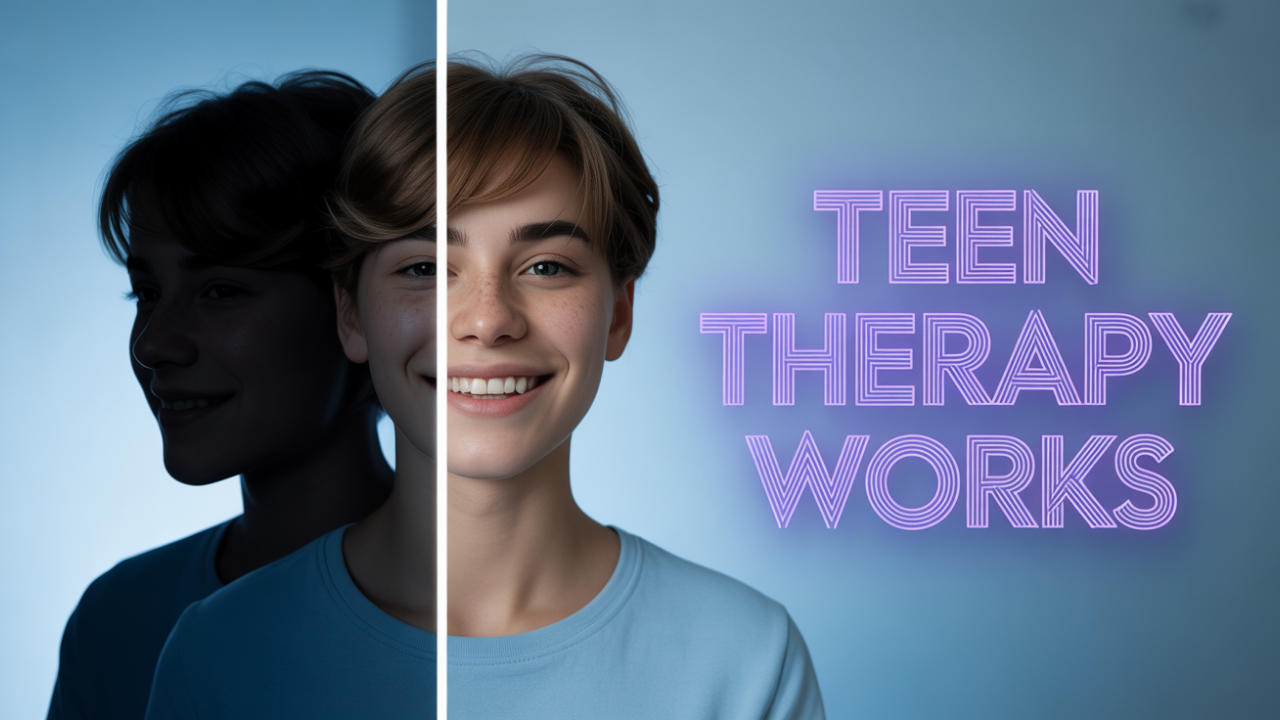Post-Traumatic Stress Disorder (PTSD) is a mental health condition described in the Diagnostic and Statistical Manual of Mental Disorders. It happens after someone experiences or witnesses a scary, dangerous, or upsetting event. These can include sexual abuse, substance abuse, grief, injury, postpartum depression, or other traumatic events. PTSD affects both your mind and body, and may lead to flashbacks, racing thoughts, panic, irritability, and feelings of fear.
Teens with PTSD may experience:
Feeling nervous, angry, or hypervigilant often
Avoiding people or places tied to the trauma (avoidance behavior)
Insomnia, trouble staying asleep, or nightmares
Feeling disconnected or numb, sometimes called emotional dysregulation
Feeling like they are not in control of their thoughts or feelings
These symptoms are grouped as avoidance symptoms, reactivity symptoms, and trauma-related symptoms. Other issues like mood disorder, anxiety disorder, adjustment disorder, reactive attachment disorder, bipolar disorder, or attachment disorder may also develop alongside PTSD.
Treatment often includes therapy sessions, counseling, medication such as sertraline, antidepressants, selective serotonin reuptake inhibitors (SSRIs), or reuptake inhibitors, and self-care practices like meditation and exercise.
Our expert health professionals and providers use individualized evaluation, diagnosis, and management plans for each patient. We follow the latest research, policies, and guidelines to ensure quality mental health care.
If you or your parent would like more information about mental health conditions and how our programs can help, contact our team. We serve teens in California, Pennsylvania, and beyond with virtual therapy sessions that support mental health, confidence, and recovery.

Not every teen reacts to trauma in the same way. Some signs to watch for include:
If you or someone you love is feeling these things, getting help is a smart and strong choice.

We know how scary it can be to talk about hard things. That’s why we offer online therapy with licensed therapists who truly listen and care. You can join from anywhere in California. You can also join from your room — your safe space.
Our online trauma therapy programs help with:
Whether you’ve gone through one event or many, our care is built around your unique needs.
There are several types of psychological treatments that can help depressed adolescents feel better. These treatments are backed by research and approved by groups like the National Institute of Mental Health, the American Psychiatric Association, and the American Academy of Child & Adolescent Psychiatry.
We focus on the trauma itself and help you learn ways to cope, heal, and rebuild your sense of safety.
This therapy helps you look at scary thoughts and learn to change them with healthier thinking. CBT includes cognitive restructuring, which teaches you how to handle distorted sense of self, guilt, or blame.
This means gently facing the memories, with a trusted therapist, so they feel less scary over time. We also offer prolonged exposure and narrative exposure therapy for deep healing.
Sometimes words are hard. We use creative ways like drawing and painting to express intense emotions and make therapy easier.
We offer individual therapy and person sessions in a caring, non-judgmental space. Our goal is to build supportive relationships and help you feel understood.

Teens often feel more secure opening up at home than in a clinic setting. That is why online therapy sessions are an effective option. You receive mental health care without leaving your comfort zone. Online platforms improve accessibility and support while ensuring privacy.
Benefits of online counseling and therapy sessions:
Meet with mental health professionals and therapists through secure video
Flexible scheduling to fit around school and family needs
Speak with someone who understands teen psychology and behavior
Feel supported while managing anxiety, mood, and mental distress in a private space
Our programs also include guidance on healthy habits like exercise, meditation, and community engagement, which are proven to improve mood disorder symptoms and lower risk of suicidal ideation.

If you’re a teen who has experienced a distressing event, mental distress, or feels overwhelmed by emotions, it’s okay to reach out. We’re here to help you find your way back to feeling safe, confident, and whole.
We create a personalized treatment plan for each patient, using an approach that supports your mind, body, and mental health. This includes working with experienced mental health professionals to improve mood, reduce anxiety, and strengthen your ability to focus your attention on healing.
Healing begins with one conversation. You don’t have to face this disorder, diagnosis, or risk alone. Our providers, therapists, and healthcare professionals are here to guide you through every therapy session and every step forward.
For more information about our programs, counseling, or how to use health insurance to cover your care, contact our team today.
You don’t have to wait. We make it easy to:
Our team includes trained medical professionals, counselors, and therapists who understand the aspects of depression and the factors for depression that teens face today.
It is private therapy through secure video therapy sessions with a licensed mental health professional who helps teens manage trauma symptoms, anxiety, mood, and emotional dysregulation. The sessions focus on improving mental health, building confidence, and reducing mental distress through evidence-based care. Teens work with an expert provider trained in psychology, psychiatry, and counseling, often using approaches like cognitive-behavioral therapy, dialectical behavior therapy, and exposure therapy.
Yes! Teens have shown significant improvement with online trauma therapy, especially through methods like cognitive-behavioral therapy (CBT), exposure therapy, trauma-focused care, and dialectical behavior therapy. These evidence-based approaches help reduce anxiety, improve mood, and support healthy behavior. Research, including clinical trials and systematic reviews, shows that online therapy sessions with licensed mental health professionals are effective for managing mental health conditions, building confidence, and lowering risk of emotional dysregulation, hypervigilance, and social isolation.
We help teens heal from sexual abuse, domestic violence, childhood trauma, medical trauma, and more.
Absolutely. We use secure, HIPAA-compliant online therapy platforms and keep everything private.
Just reach out to our team. We’ll walk you through the steps and help you feel comfortable before your first therapy session.
Compassionate support, expert guidance, and tailored programs for adolescent mental health.
Connect with Adolescent Mental Health today. Let us guide your teenager towards resilience and well-being.
online teen trauma therapy, private teen ptsd treatment, ptsd treatment online, online ptsd treatment, online therapy for teenage trauma, treatment for ptsd in teens, ptsd psychiatry online